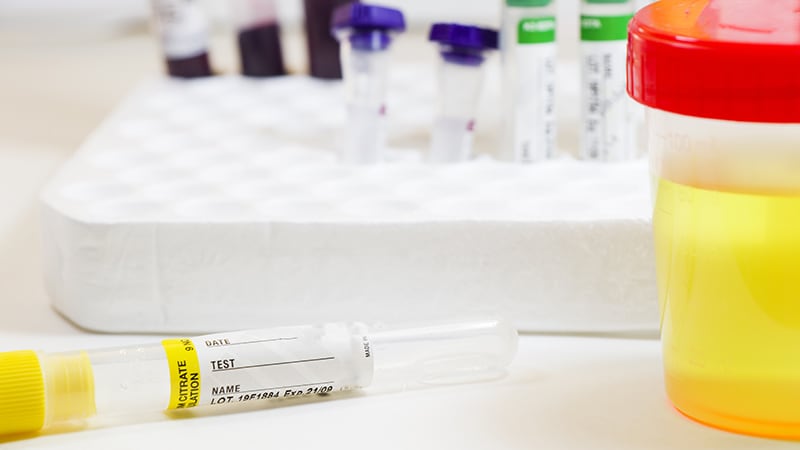New Guidelines on Diabetes-Related Laboratory Testing
Core Concepts
New guidelines provide comprehensive recommendations for diabetes laboratory testing and management.
Abstract
The American Association of Clinical Chemistry (AACC) and American Diabetes Association (ADA) released guidelines for laboratory measures in diabetes diagnosis and management. The document focuses on practical care aspects to aid decisions on laboratory tests for diabetes screening, diagnosis, and monitoring. Recommendations include the use of continuous glucose monitoring (CGM) and the importance of test accuracy and precision. Key recommendations cover fasting glucose measurement, blood glucose monitoring, treatment goals, and testing for albuminuria. The guidelines also address ketone testing, genetic markers, autoimmune markers, and C-peptide analysis.
New Guidelines on Diabetes-Related Laboratory Testing
Stats
"Fasting glucose should be measured in venous plasma when used to establish the diagnosis of diabetes, with a diagnostic cutoff of > 7.0 mmol/L (> 126 mg/dL) for diabetes."
"Treatment goals should be based on ADA recommendations, ie A1c < 7% (< 53 mmol/mol) if it can be achieved without significant hypoglycemia or other adverse treatment effects."
"Annual testing for albuminuria should begin in pubertal or post-pubertal individuals 5 years after diagnosis of type 1 diabetes and at time of diagnosis of type 2 diabetes, regardless of treatment."
Quotes
"Patient care is a team effort." - David B. Sacks
Key Insights Distilled From
by Miriam E. Tu... at www.medscape.com 07-25-2023
https://www.medscape.com/viewarticle/994748
Deeper Inquiries
How can these guidelines impact the current practices in diabetes management?
The new guidelines on diabetes-related laboratory testing can have a significant impact on current practices in diabetes management by providing updated and evidence-based recommendations for laboratory measures in the diagnosis and management of diabetes. These guidelines aim to assist both laboratory professionals and clinicians in making informed decisions regarding the use and interpretation of laboratory tests for screening, diagnosing, and monitoring patients with diabetes. By emphasizing the importance of accurate testing, proper handling of specimens, and the limitations of certain tests, these guidelines can help improve the quality of care provided to individuals with diabetes. Additionally, the inclusion of recommendations on real-time continuous glucose monitoring (CGM) and other aspects of diabetes management can lead to more personalized and effective treatment strategies.
What are the potential challenges in implementing these recommendations in clinical settings?
One potential challenge in implementing these recommendations in clinical settings is the need for healthcare providers to stay updated with the latest guidelines and incorporate them into their practice. This may require additional training and education to ensure that clinicians are aware of the changes and understand how to apply them in their daily practice. Another challenge could be the availability of resources and infrastructure to support the recommended laboratory testing procedures, especially in settings with limited access to advanced technology or specialized testing equipment. Additionally, changing established practices and workflows to align with the new guidelines may require time and effort, potentially leading to resistance or reluctance from healthcare providers.
How can advancements in technology further improve diabetes laboratory testing and management?
Advancements in technology have the potential to further improve diabetes laboratory testing and management by enhancing the accuracy, efficiency, and accessibility of testing procedures. For example, the development of more advanced glucose monitoring devices, such as continuous glucose monitors (CGMs) and point-of-care testing devices, can provide real-time data to patients and healthcare providers, allowing for more timely adjustments to treatment plans. Additionally, the use of electronic health records (EHRs) and telemedicine platforms can streamline communication between healthcare providers and patients, facilitating remote monitoring and management of diabetes. Furthermore, innovations in artificial intelligence (AI) and machine learning can help analyze large datasets to identify patterns and trends in diabetes management, leading to more personalized and effective treatment strategies. Overall, advancements in technology hold great promise for improving the quality of diabetes care and outcomes.
0
More on Healthcare
